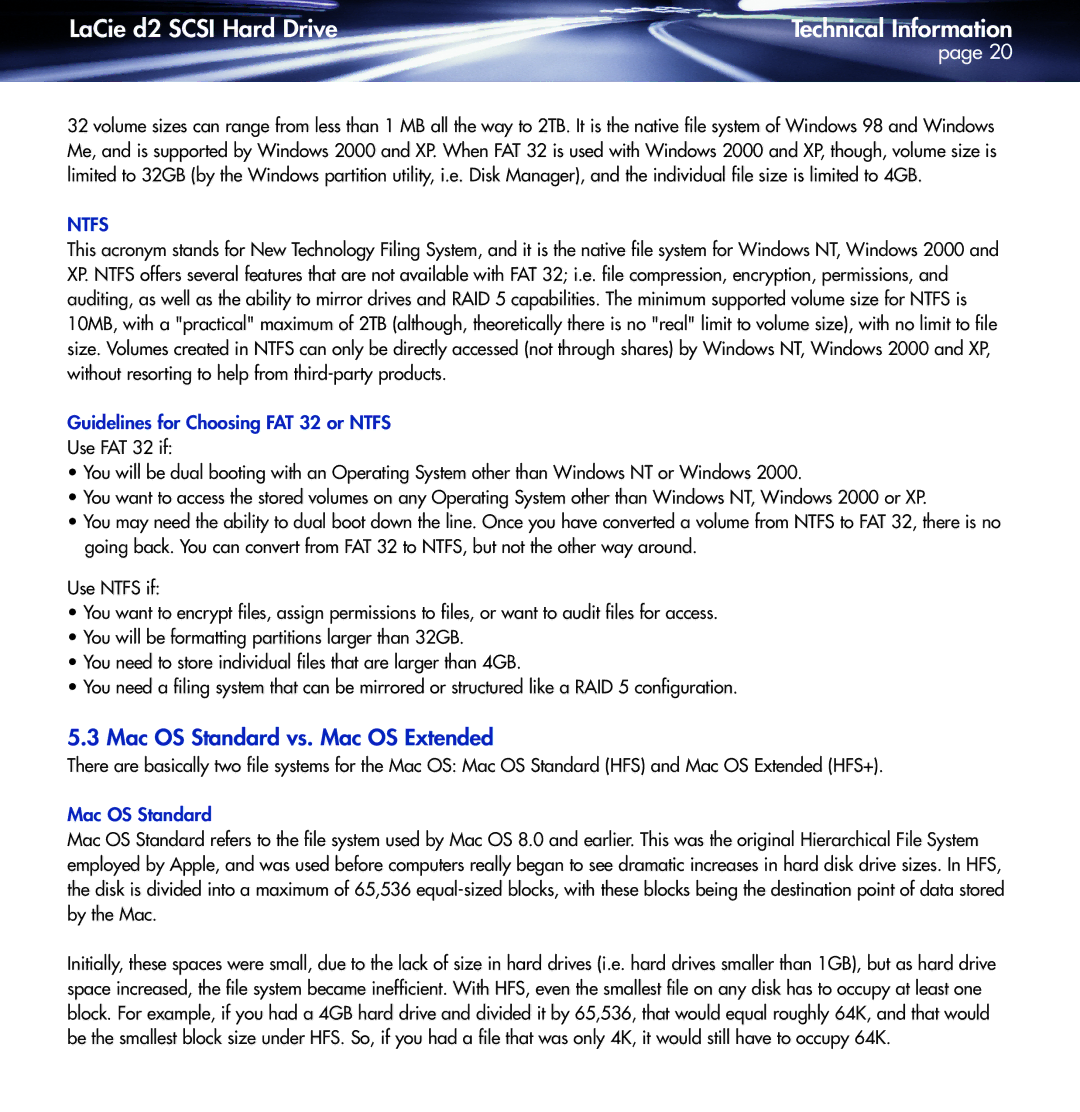
LaCie d2 SCSI Hard Drive | Technical Information |
| page 20 |
32 volume sizes can range from less than 1 MB all the way to 2TB. It is the native file system of Windows 98 and Windows Me, and is supported by Windows 2000 and XP. When FAT 32 is used with Windows 2000 and XP, though, volume size is limited to 32GB (by the Windows partition utility, i.e. Disk Manager), and the individual file size is limited to 4GB.
NTFS
This acronym stands for New Technology Filing System, and it is the native file system for Windows NT, Windows 2000 and XP. NTFS offers several features that are not available with FAT 32; i.e. file compression, encryption, permissions, and auditing, as well as the ability to mirror drives and RAID 5 capabilities. The minimum supported volume size for NTFS is 10MB, with a "practical" maximum of 2TB (although, theoretically there is no "real" limit to volume size), with no limit to file size. Volumes created in NTFS can only be directly accessed (not through shares) by Windows NT, Windows 2000 and XP, without resorting to help from
Guidelines for Choosing FAT 32 or NTFS
Use FAT 32 if:
•You will be dual booting with an Operating System other than Windows NT or Windows 2000.
•You want to access the stored volumes on any Operating System other than Windows NT, Windows 2000 or XP.
•You may need the ability to dual boot down the line. Once you have converted a volume from NTFS to FAT 32, there is no going back. You can convert from FAT 32 to NTFS, but not the other way around.
Use NTFS if:
•You want to encrypt files, assign permissions to files, or want to audit files for access.
•You will be formatting partitions larger than 32GB.
•You need to store individual files that are larger than 4GB.
•You need a filing system that can be mirrored or structured like a RAID 5 configuration.
5.3 Mac OS Standard vs. Mac OS Extended
There are basically two file systems for the Mac OS: Mac OS Standard (HFS) and Mac OS Extended (HFS+).
Mac OS Standard
Mac OS Standard refers to the file system used by Mac OS 8.0 and earlier. This was the original Hierarchical File System employed by Apple, and was used before computers really began to see dramatic increases in hard disk drive sizes. In HFS, the disk is divided into a maximum of 65,536
Initially, these spaces were small, due to the lack of size in hard drives (i.e. hard drives smaller than 1GB), but as hard drive space increased, the file system became inefficient. With HFS, even the smallest file on any disk has to occupy at least one block. For example, if you had a 4GB hard drive and divided it by 65,536, that would equal roughly 64K, and that would be the smallest block size under HFS. So, if you had a file that was only 4K, it would still have to occupy 64K.
